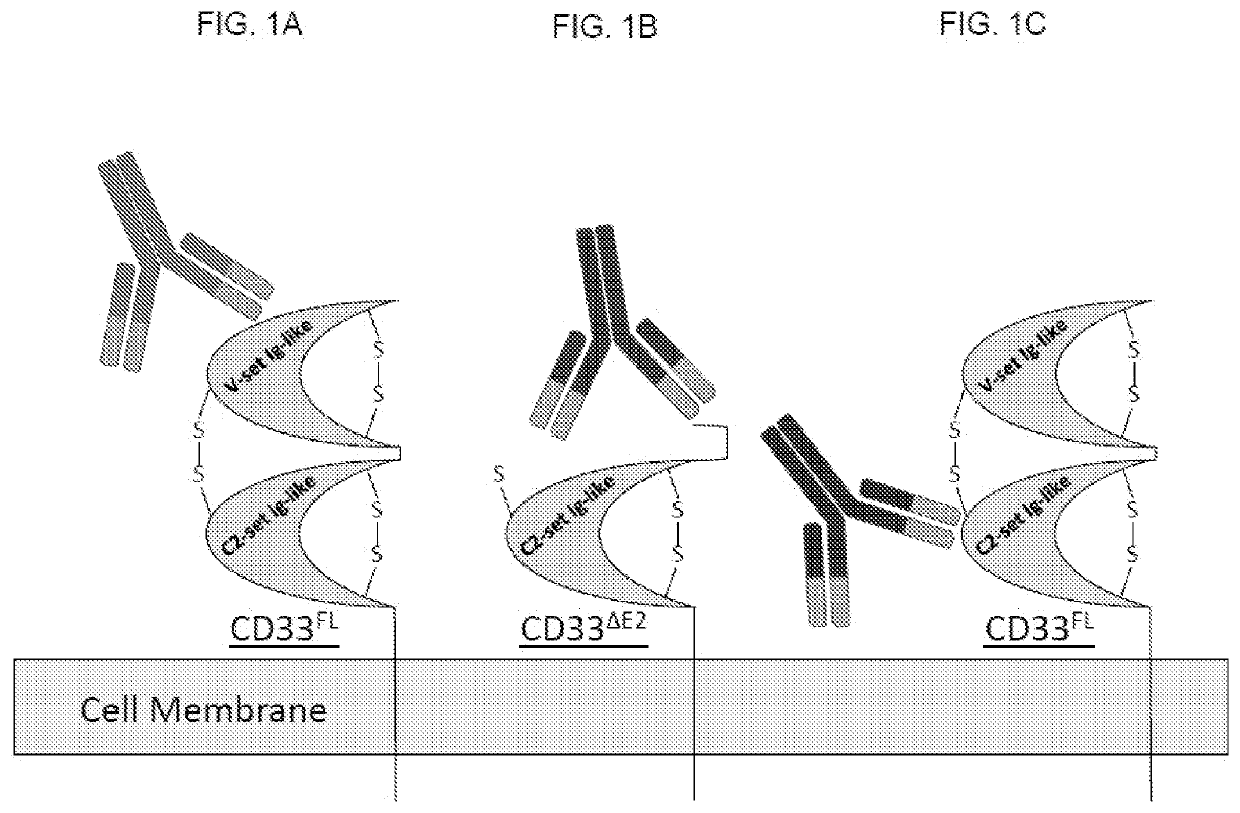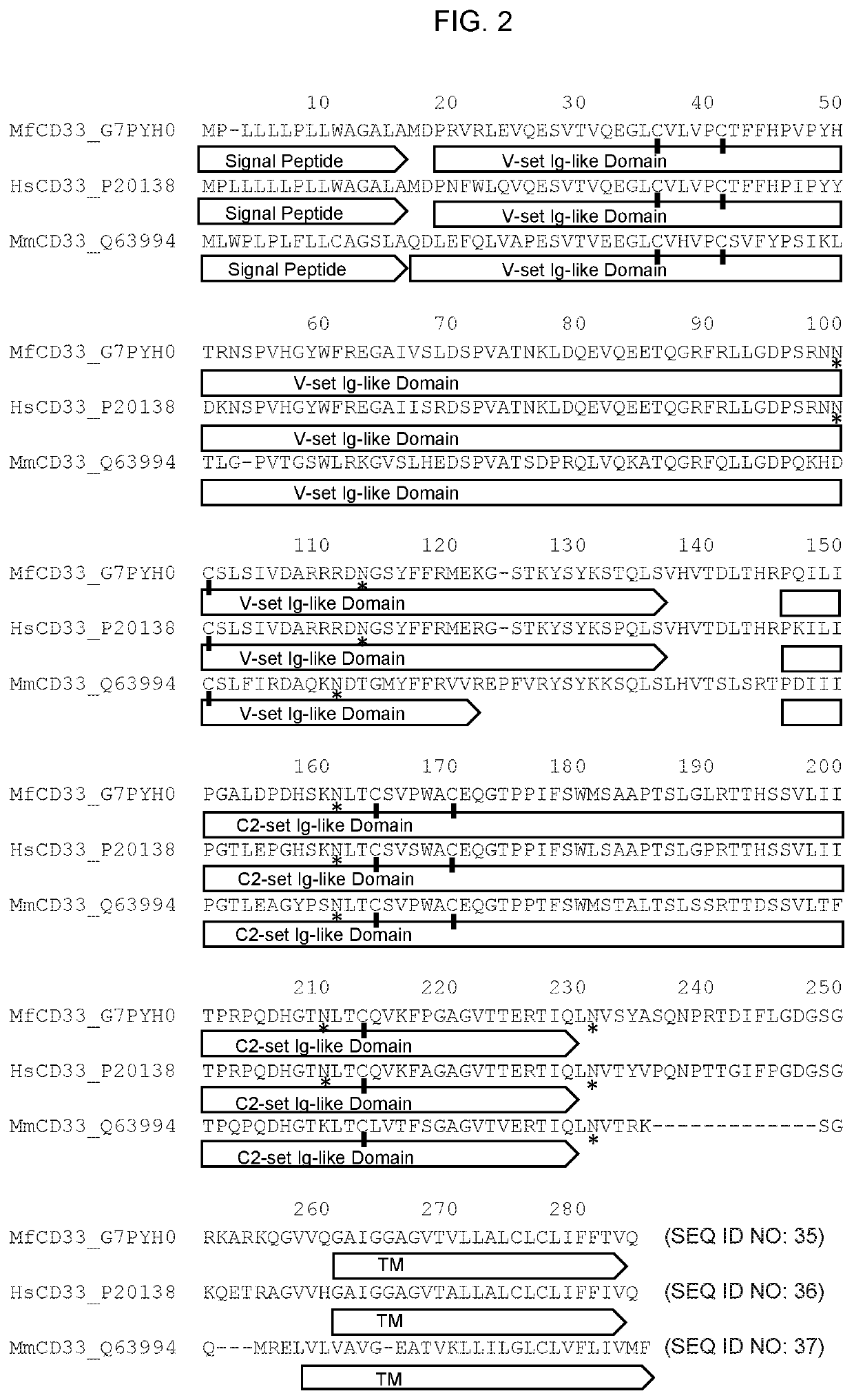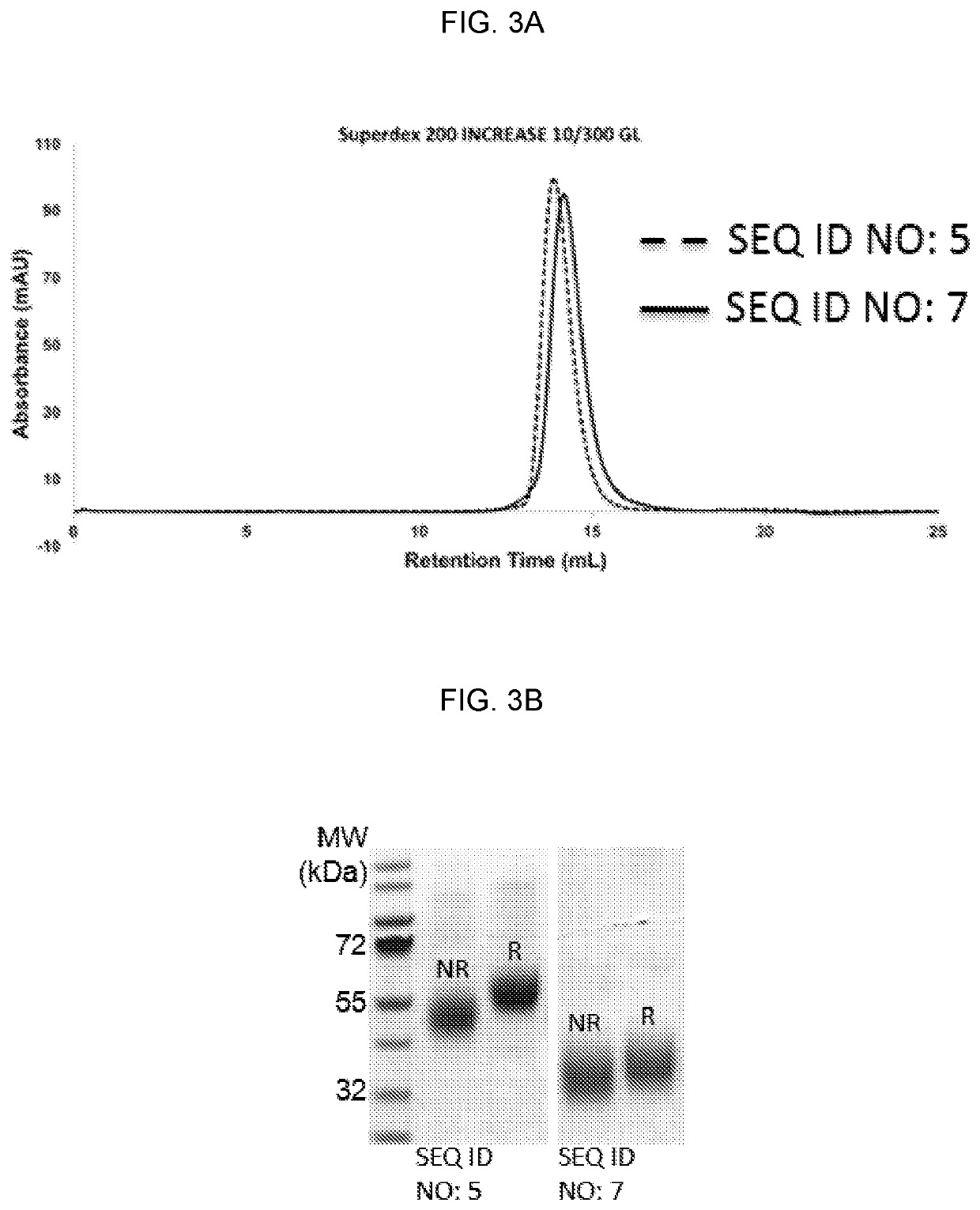Anti-cd33 antibodies and uses thereof
- Summary
- Abstract
- Description
- Claims
- Application Information
AI Technical Summary
Benefits of technology
Problems solved by technology
Method used
Image
Examples
example 1
Identification and Characterization of CD33-Specific Antibodies
[0295]FIGS. 4A-4C illustrate the expression (FIG. 4A, 4B) and characterization of two CD33FL specific (8F5 and 5D12) and one CD33ΔE2 specific (12B12) antibodies. Affinities for these antibodies (shown in FIG. 4C) were characterized by Biacore (Biacore, A&G Pharmaceutical, Inc., Columbia, Md.) using purified antibodies and the corresponding soluble ectodomains. KD for 8F5 is 8 nM; KD for 12B12 is 8 nM, and KD for 5D12 is 112 pM.
[0296]Most, if not all, therapeutic and diagnostic antibodies available prior to the developments are specific for the membrane distal V-set Ig-like domain of CD33 and therefore do not recognize the C2-set Ig-like domain and consequently also do not recognize the CD33ΔE2 isoform. FIG. 5 illustrates flow cytometry binding assay characterization of full-length CD33-specific antibodies (that is, which bind CD33FL), compared with the commercially available anti-CD33 antibody P67.6. REH=human CD33neg ly...
example 2
Expression and Purification of CD33FL and CD33ΔE2 Isoforms
[0299]Extracellular versions of CD33FL (SEQ ID NO: 5) and the CD33ΔE2 (SEQ ID NO: 7) isoforms were expressed, purified, and characterized. Size exclusion chromatography (FIG. 3A) and SDS-PAGE gel (FIG. 3B) show the purified recombinant proteins. FIG. 3C shows signal peptide prediction using the program SignalP (freely available on the World Wide Web at cbs.dtu.dk / services / SignalP / ). This result highlights the fact that the leader peptide present on the CD33ΔE2 isoform is not recognizable as such (using SignalP) and therefore this portion of the isoform may represent a novel neoepitope. The sequence shown corresponds to positions 1-70 of SEQ ID NO: 2. FIG. 3D shows peptide sequences (SEQ ID NOs: 28-31) derived from the N-terminus of the recombinant CD33ΔE2 isoform as determined by mass spectrometry. Recombinant protein was reduced, alkylated and trypsinized to generate the data set.
example 3
Identification and Characterization of Additional CD33-Specific Antibodies
[0300]A series of C2-set domain-directed CD33 antibodies in mice were generated. As shown in FIG. 8, in REH (human CD33neg lymphoid) cells and sublines engineered to express CD33ΔE2 or CD33FL, five antibody clones (1H7, 2D5, 2F7, 3H10, and 4C10) recognized both CD33ΔE2 and CD33FL and are therefore believed to bind the C2-set domain. Additional studies with 1H7 showed lack of binding to cells displaying an artificial CD33 molecule that contains only the V-set domain (CD33ΔE3-4; FIG. 9), confirming C2-set domain binding. CD33ΔE3-E4 is an artificial, lab-generated CD33 molecule that contains only the V-set but not C2-set domain. This bring the V-set domain closer to the membrane and enables use of a V-set antibody (like AMG 330) to show that membrane proximal binding of therapeutic CD33 antibodies is superior to membrane-distal binding. This data supports the assertion that C2-set Ig-like domain antibodies (as de...
PUM
| Property | Measurement | Unit |
|---|---|---|
| Area | aaaaa | aaaaa |
| Therapeutic | aaaaa | aaaaa |
| Pharmaceutically acceptable | aaaaa | aaaaa |
Abstract
Description
Claims
Application Information
 Login to View More
Login to View More - R&D
- Intellectual Property
- Life Sciences
- Materials
- Tech Scout
- Unparalleled Data Quality
- Higher Quality Content
- 60% Fewer Hallucinations
Browse by: Latest US Patents, China's latest patents, Technical Efficacy Thesaurus, Application Domain, Technology Topic, Popular Technical Reports.
© 2025 PatSnap. All rights reserved.Legal|Privacy policy|Modern Slavery Act Transparency Statement|Sitemap|About US| Contact US: help@patsnap.com



